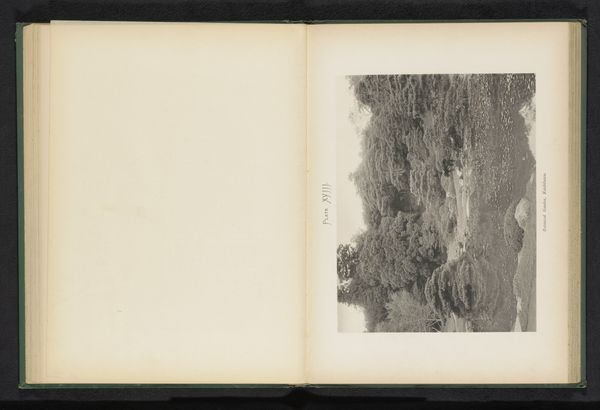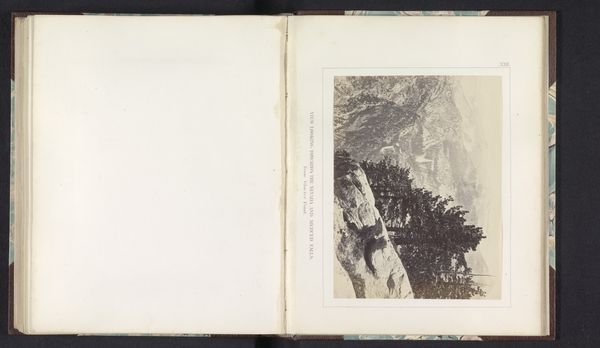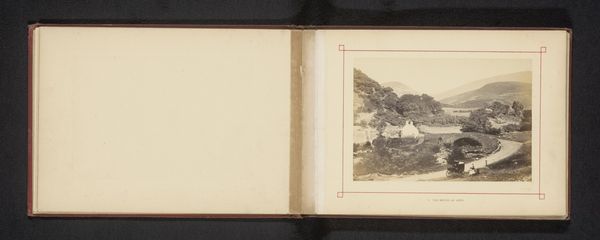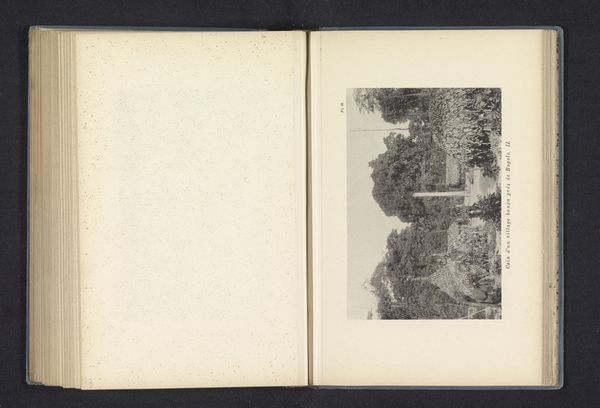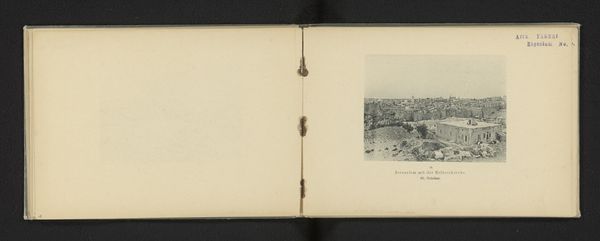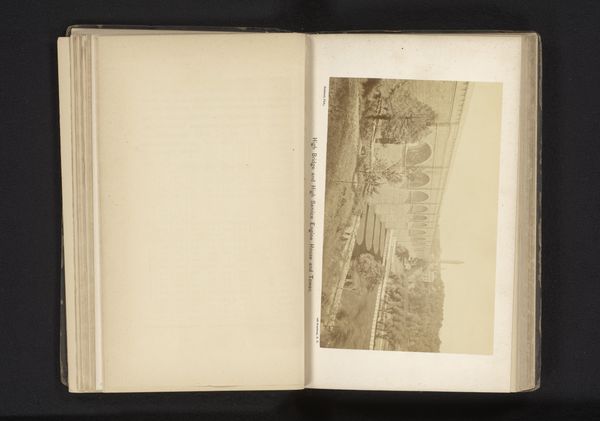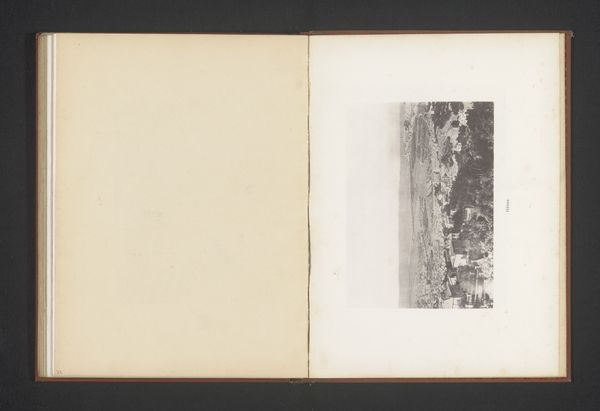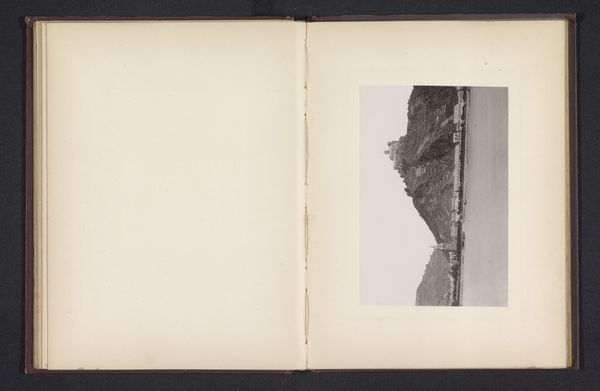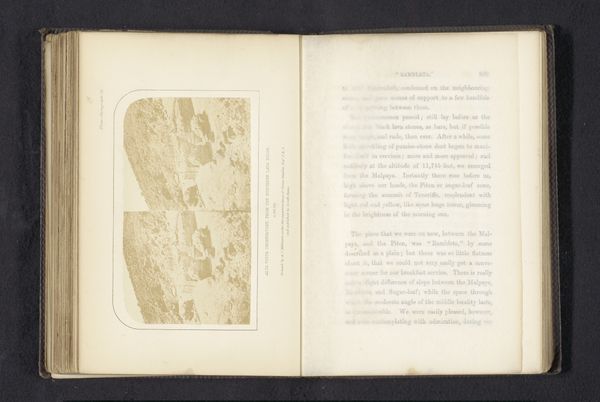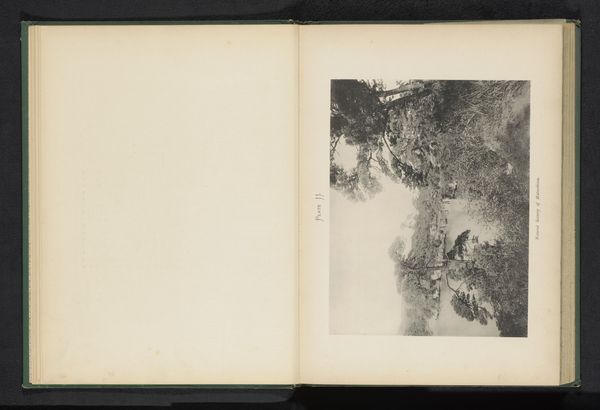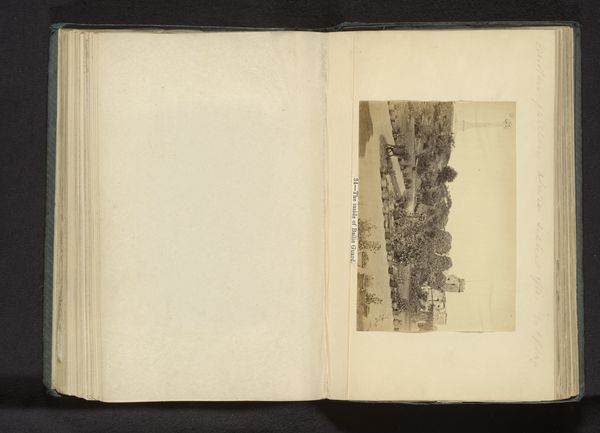
print, paper, photography, albumen-print
#
aged paper
#
homemade paper
#
16_19th-century
#
paperlike
# print
#
sketch book
#
landscape
#
personal journal design
#
paper texture
#
paper
#
photography
#
personal sketchbook
#
thick font
#
paper medium
#
design on paper
#
albumen-print
Dimensions: height 113 mm, width 174 mm
Copyright: Rijks Museum: Open Domain
Curator: The visual weight is incredible, a very visceral experience of encountering geologic time compressed into a single image. Editor: I see you're drawn to the earth's story embedded within. This is "Rock Cutting for Sewer," an albumen print created before 1872 by George Gardner Rockwood, and presented here as part of a sketchbook. The sepia tones highlight its status as an artifact. Curator: The monochromatic scheme immediately strikes me as archaeological. Look at the rockface; it almost feels like we are peering into the remnants of an ancient civilization’s forgotten monument or catacomb entrance. The human involvement implied gives it such gravitas. Editor: Absolutely, and I think that implication speaks volumes about humanity’s intervention within this natural landscape, driven by necessity. The title gives it away; "Rock Cutting for Sewer," indicating infrastructural interventions—the construction and manipulation, which leads us to consider labor and social progress. What kind of work and people were required to engineer such a project at the time this photo was captured? Curator: And notice that almost cave-like void within the strata itself. Dark negative spaces have a strong symbolic meaning: often alluding to rebirth, unseen potential and transformation – that man-made cave then, serving a double purpose. Editor: Yes, there's a powerful juxtaposition happening here. On one hand, it illustrates human capability of construction in the name of civics. But the very existence of this man-made cavity into the face of a natural setting, reminds me of resource extraction and questions our relationship with earth’s own geological narratives and material cycles. Curator: It leaves you considering just how much cultural significance is etched into any landscape. So the meaning-making becomes layered, enriched by that constant dialog between raw matter, imposed function, and the artist's intention when fixing the photograph. Editor: Agreed; observing the methods of altering geological landscapes opens discussions about our resource consumption itself—while also preserving this image with meticulous printing skills of the era. In this respect, Rockwood documented his time by offering layers into production as material, labor, image.
Comments
No comments
Be the first to comment and join the conversation on the ultimate creative platform.
